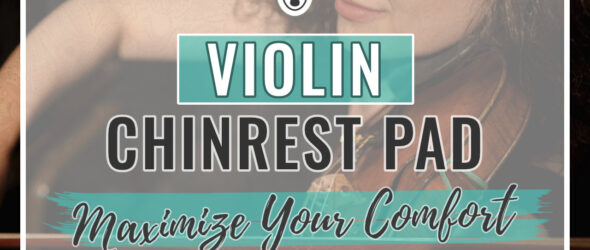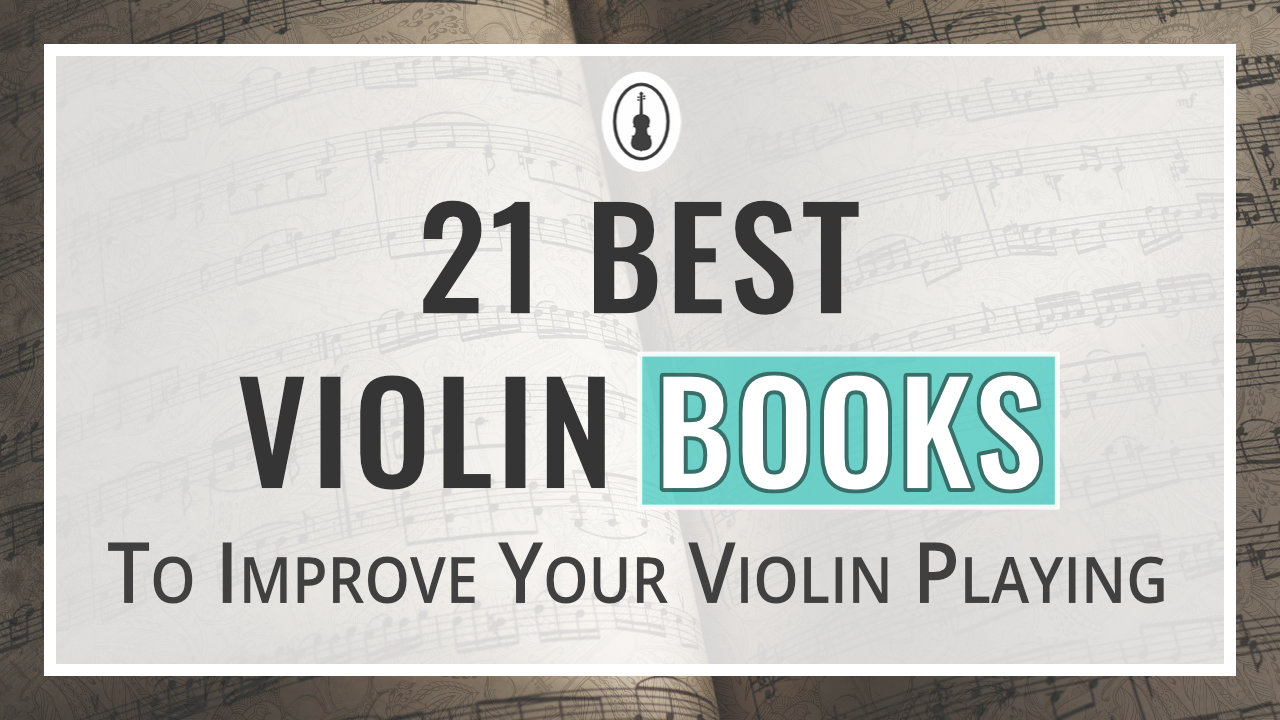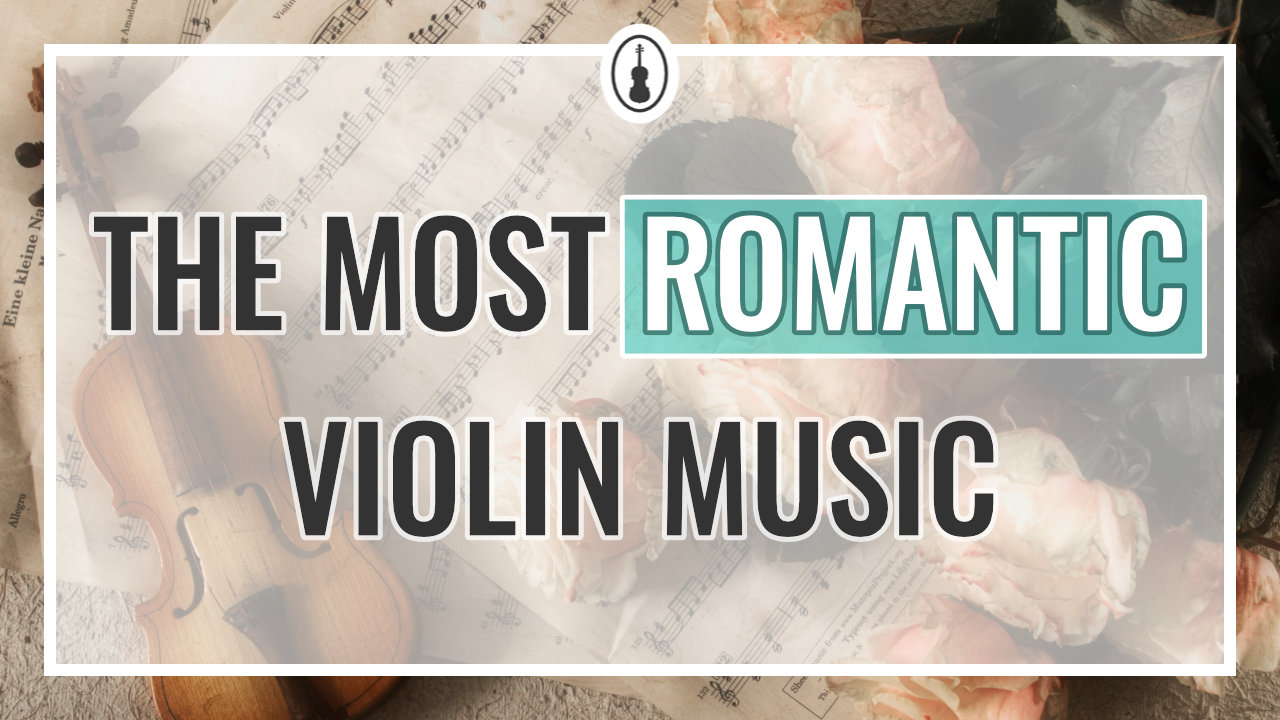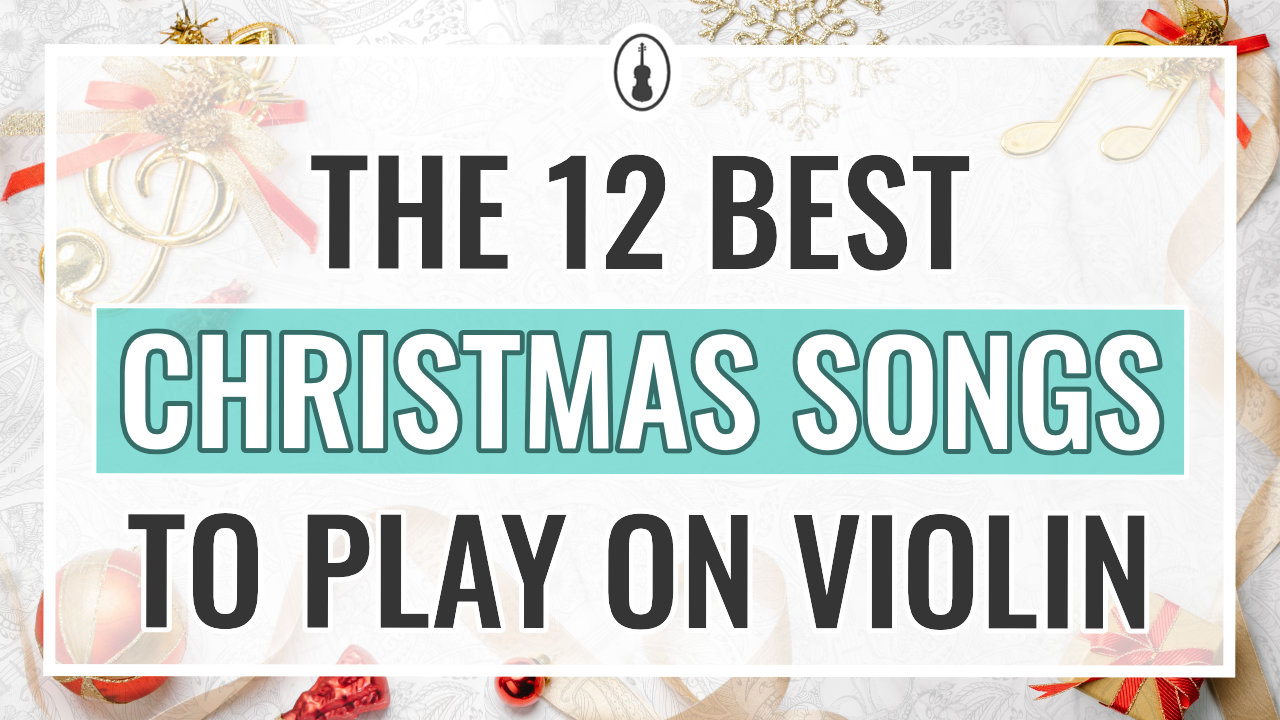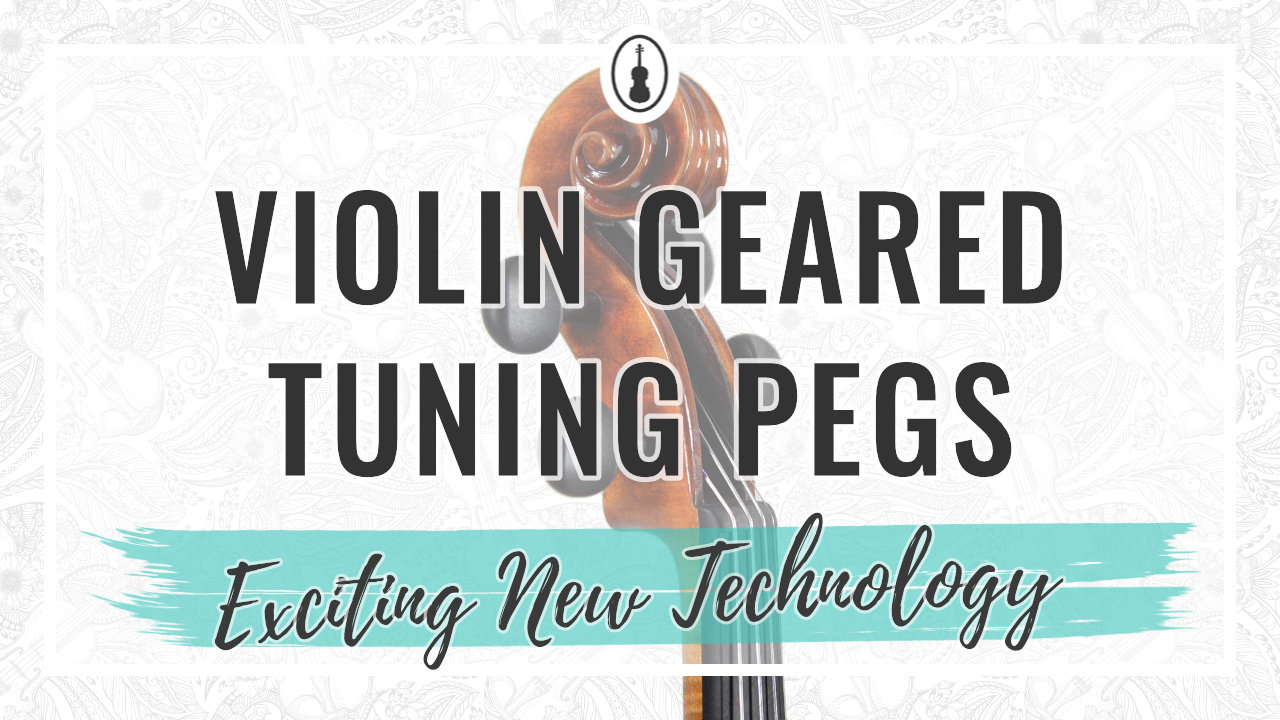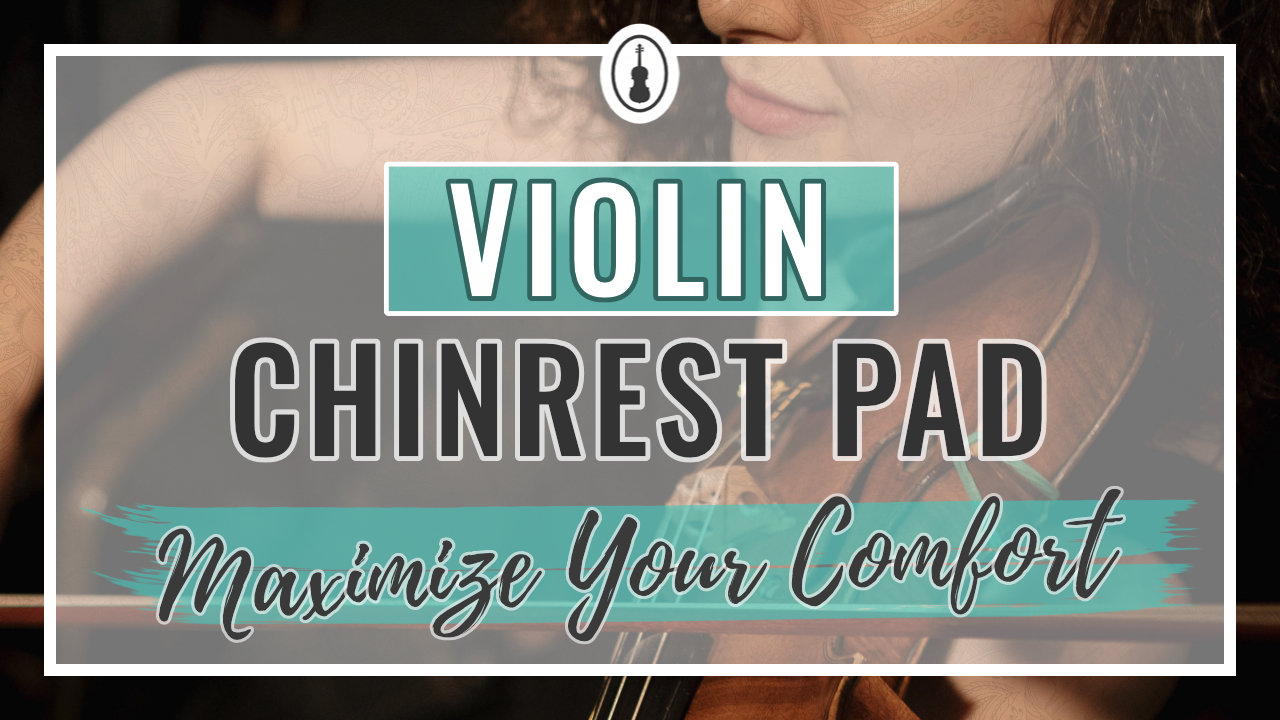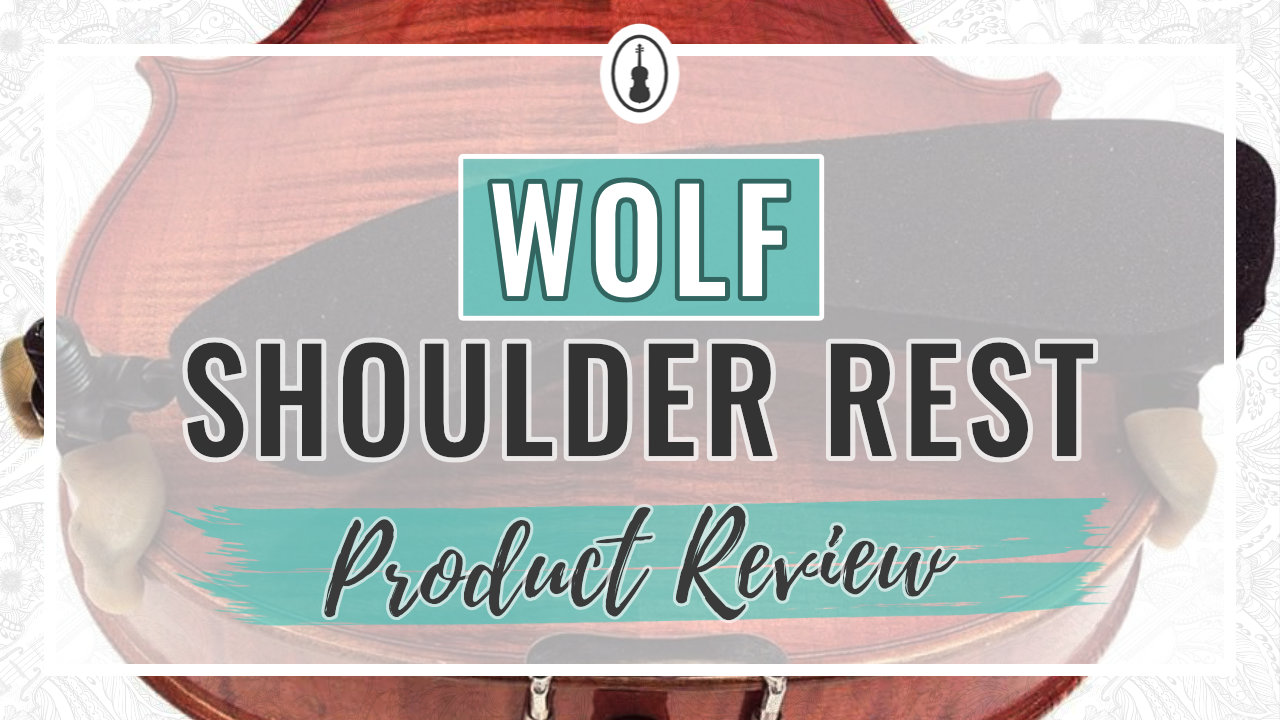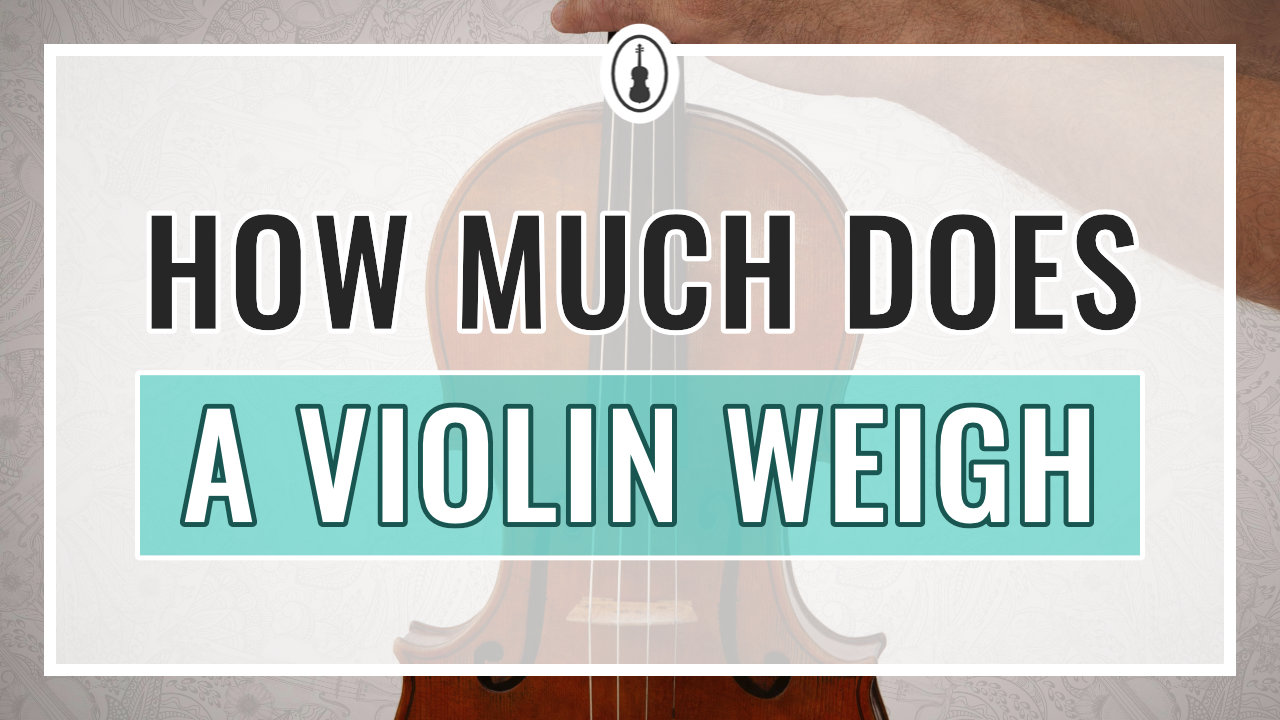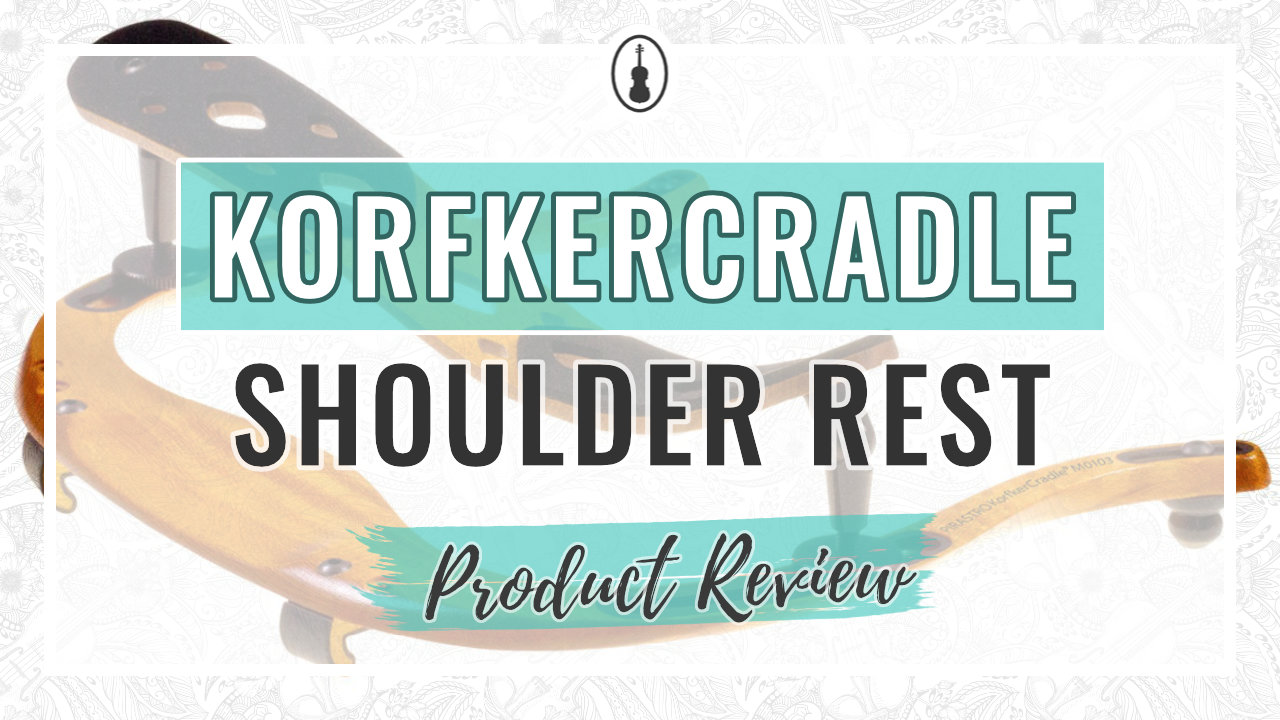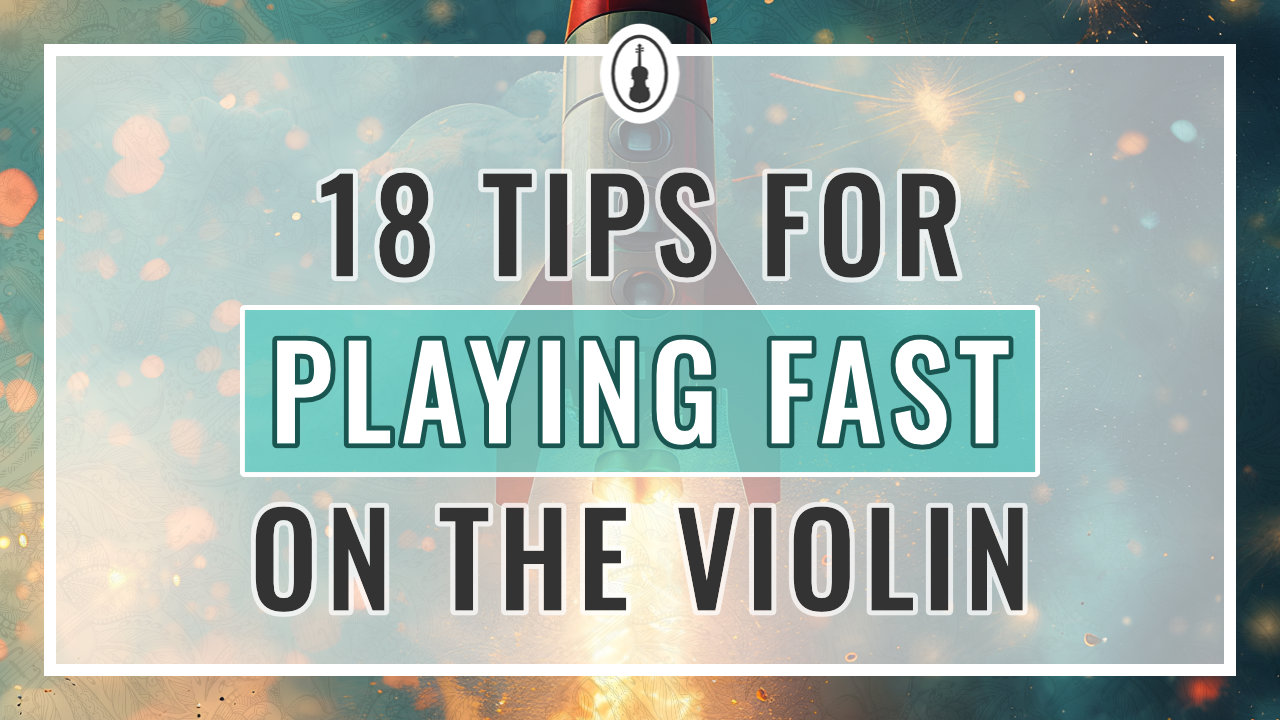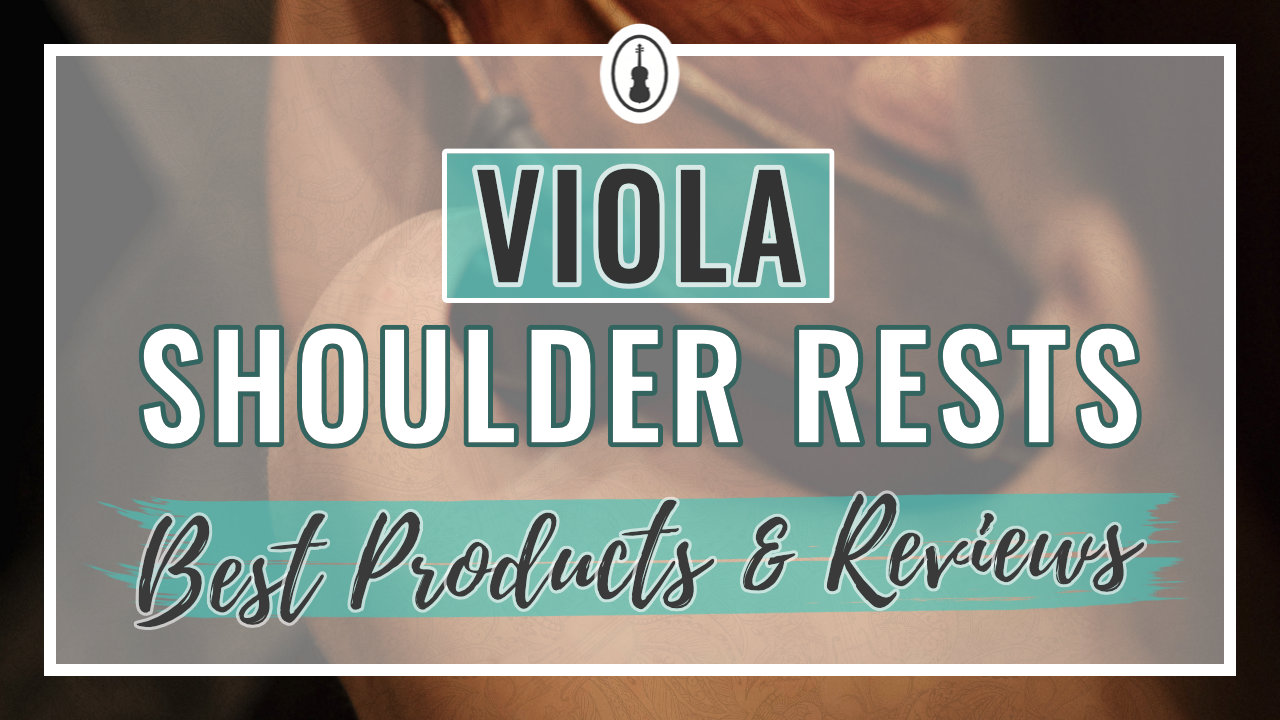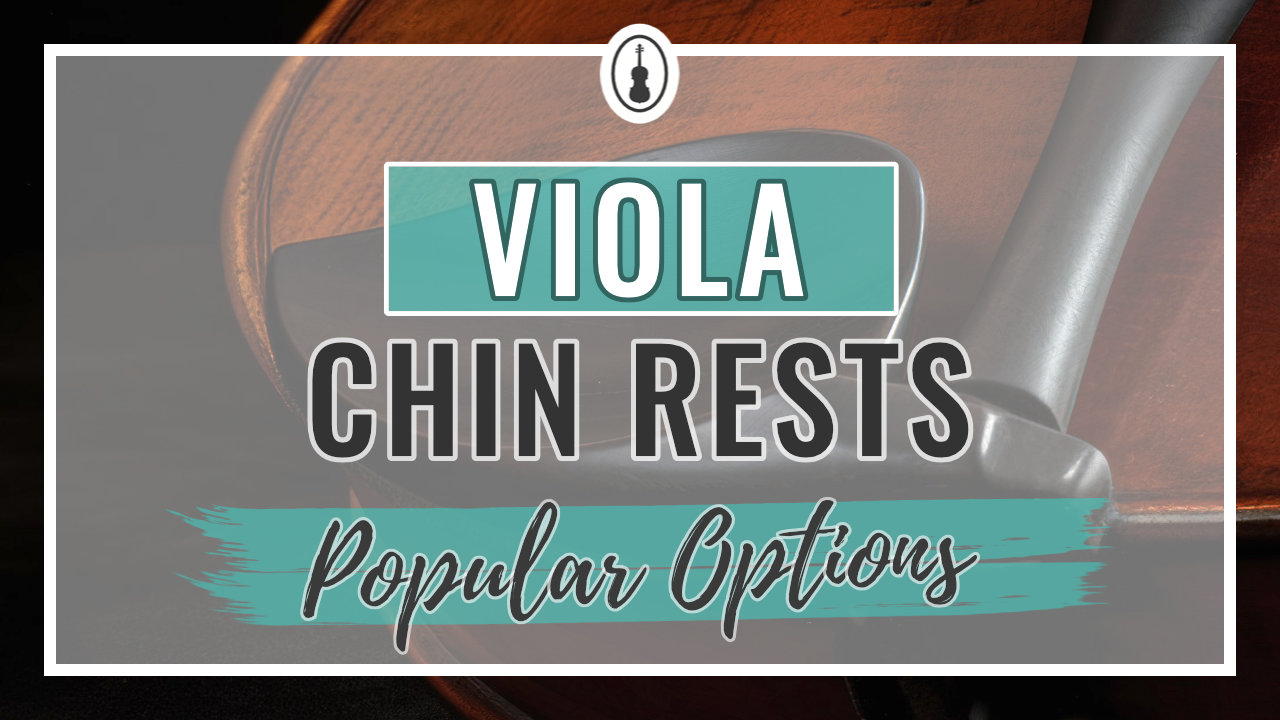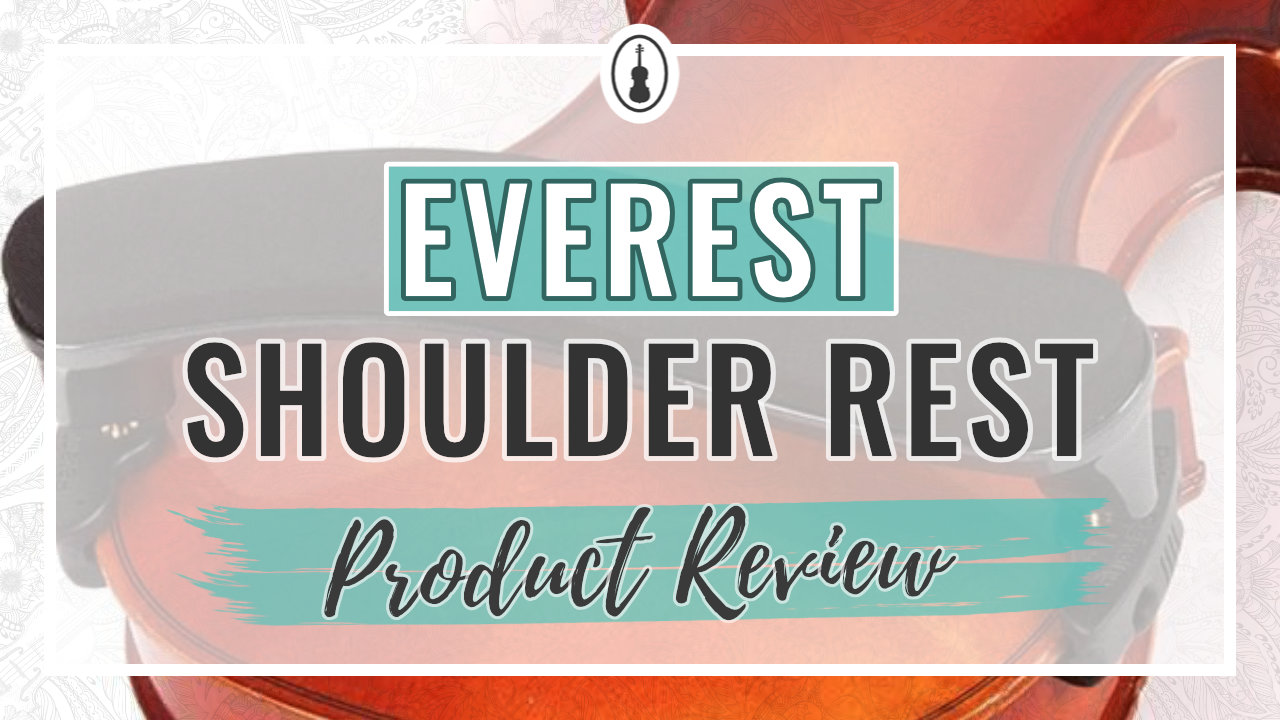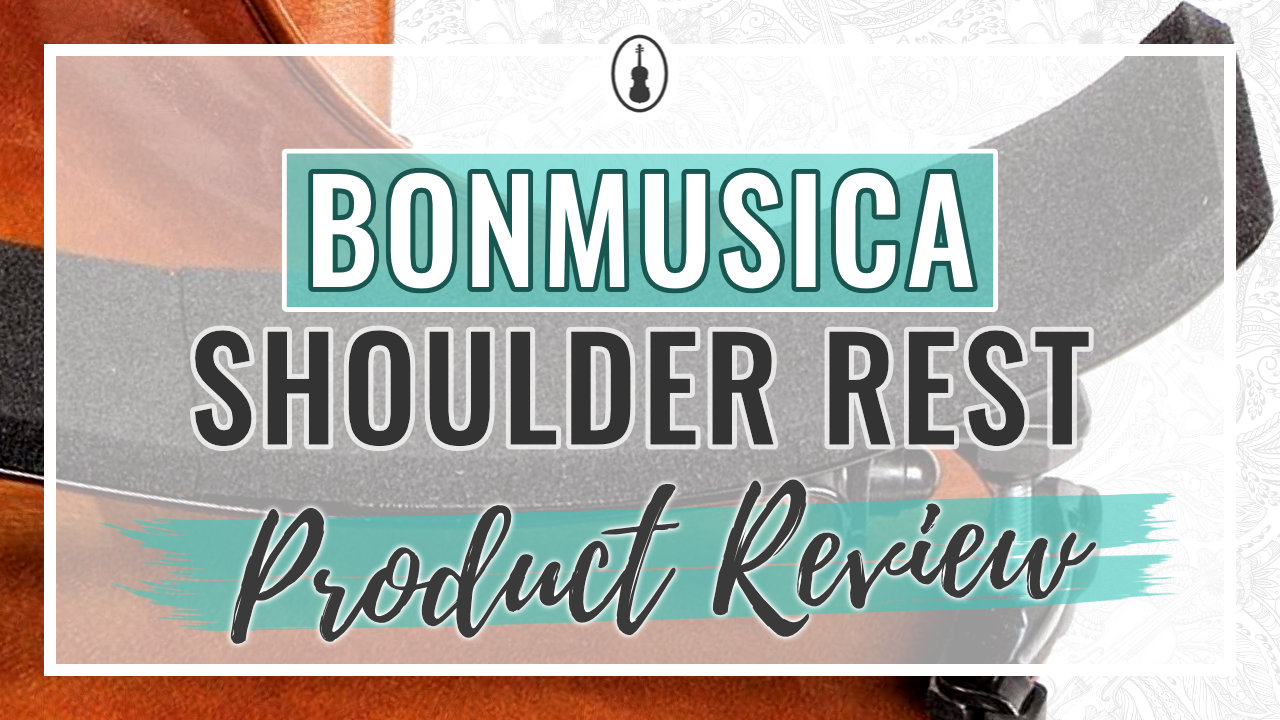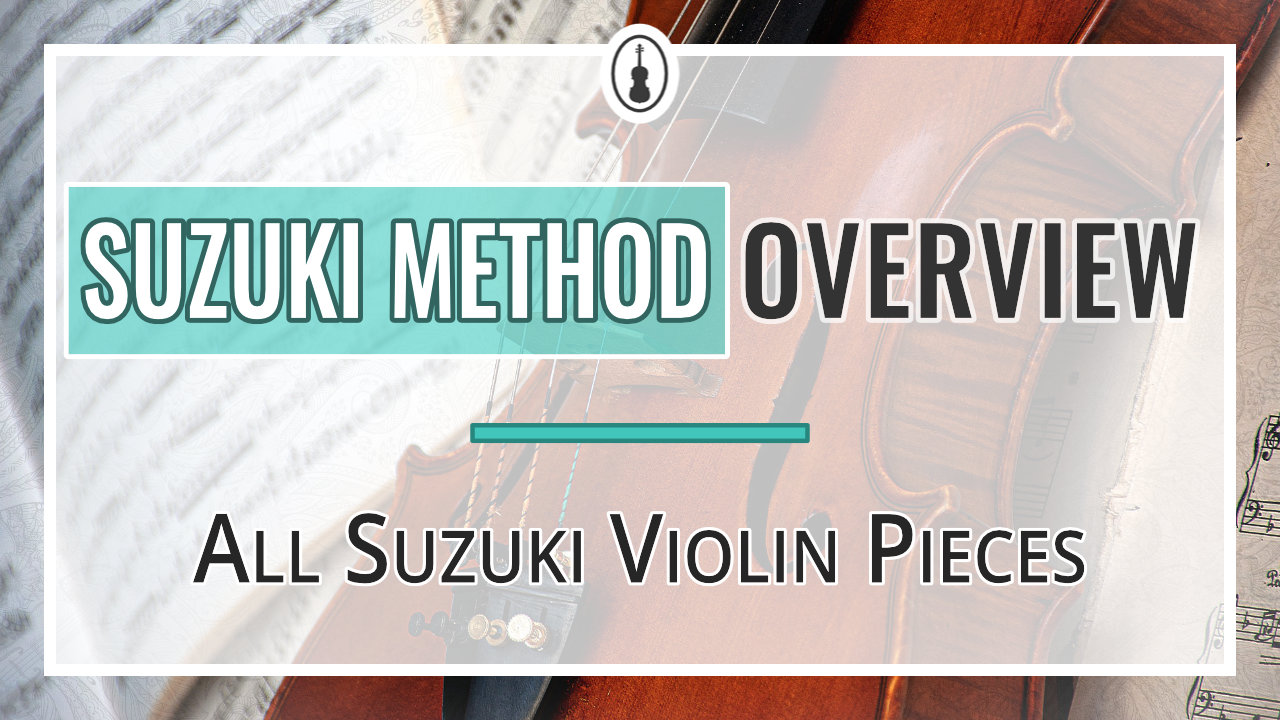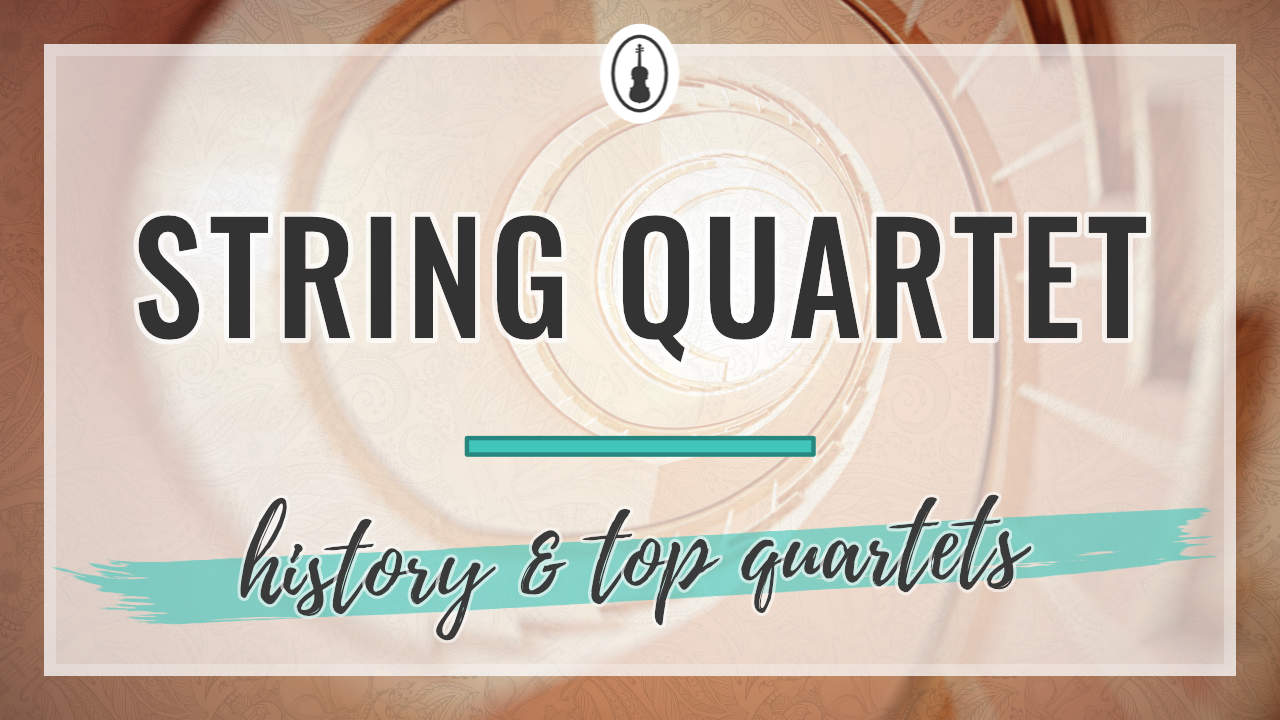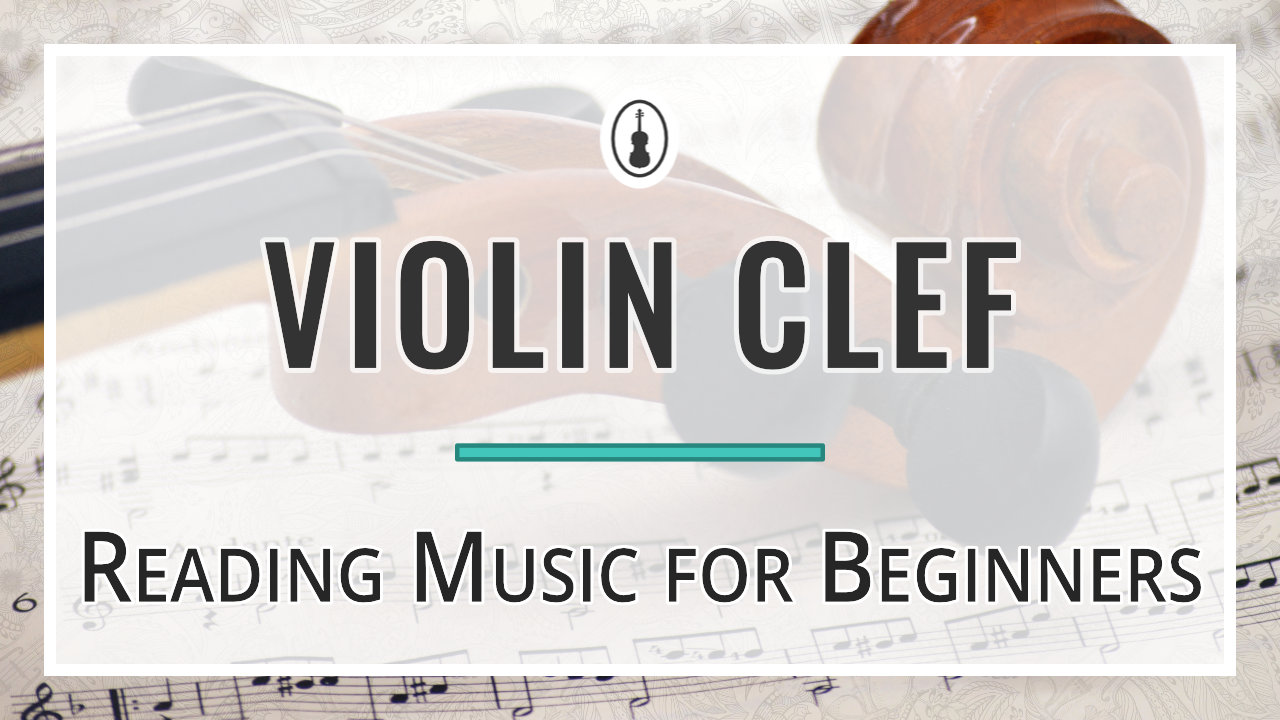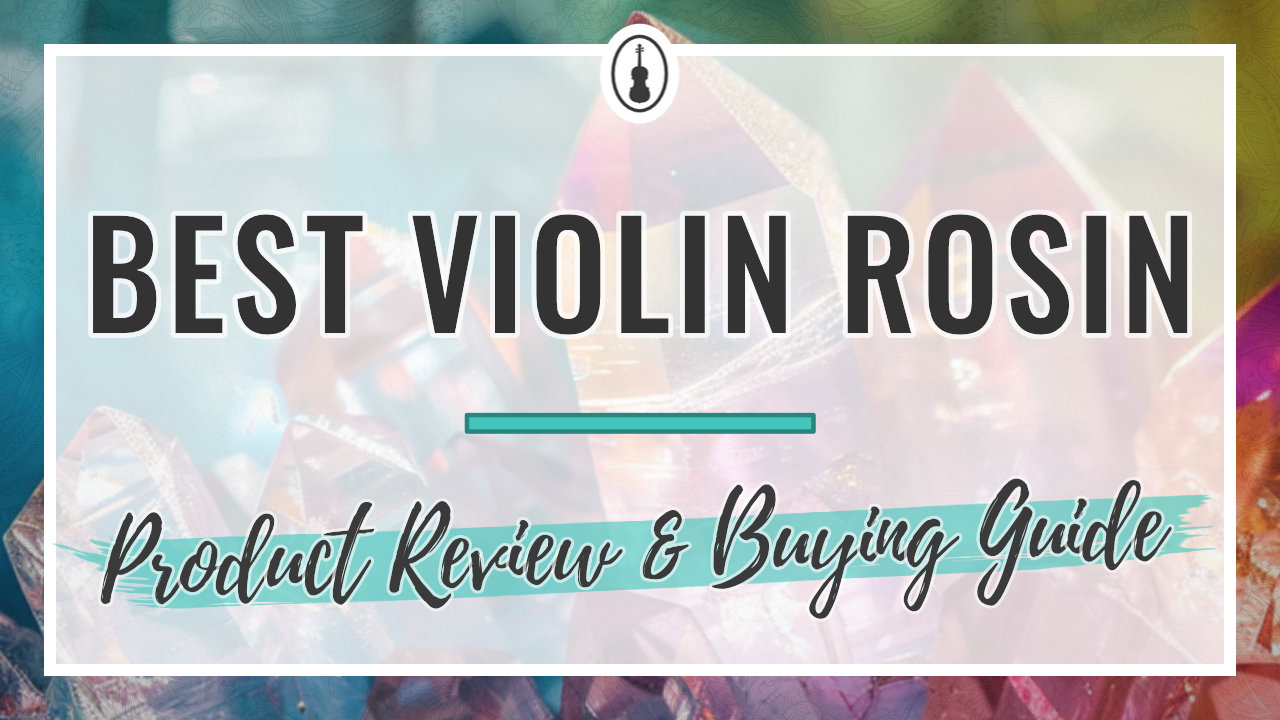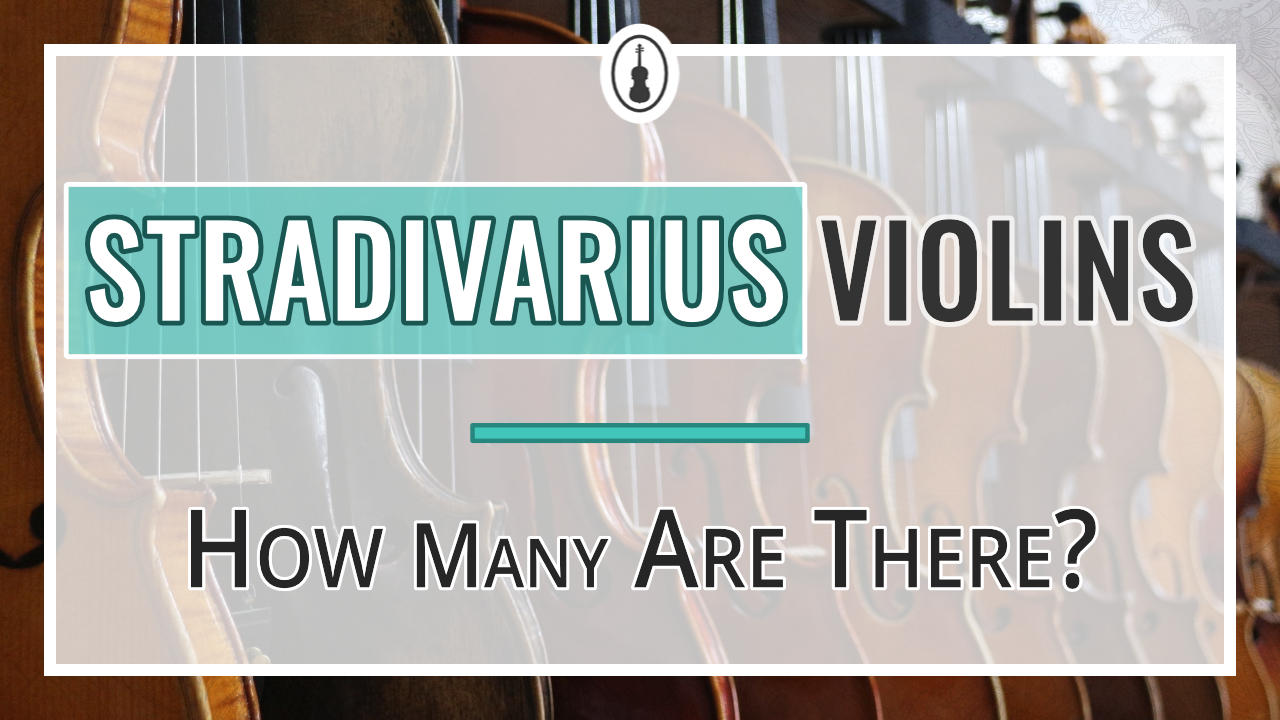Explaining the violin chinrest pad and why you might want to use one
Although you might not think about it much, the chinrest is more than just a functional part of the violin; the setup of your chinrest can dictate your entire playing experience!
I’ve worked with so many students through the years who have benefitted from little modifications to make their chinrest more comfortable. Sometimes the texture of the chinrest is uncomfortable against the jaw; others may feel irritation on their neck from the violin as a whole.
A chinrest pad is a soft layer that sits between the chinrest and your jaw or chin. It can enhance comfort, reduce pressure, and eliminate any irritation you might experience on your skin. Whether you’re a beginner looking for more comfort or a seasoned player searching for the perfect fit, trying out a chinrest pad can make a significant difference in your playing experience.
Today we’ll look at why you might want to use a chinrest pad, what your options are, and how to use them. Let’s dive in!

What is a Chinrest Pad?
A violin chinrest pad is a piece of foam, leather, or cloth that sits on the chin rest and sometimes wraps over the button (end pin) to the back of the violin. Some chinrest pads are attached with loops, some use Velcro, and others require adhesive.
Sometimes a chinrest pad can be DIY-ed: I’ve seen players drape a handkerchief over their chinrest to achieve the same effect. If you’re crafty, you can even make your own fabric cover!

Why Should I Use a Chinrest Pad?
Chinrest pads aren’t universally used, but they can help eliminate a lot of pain and irritation.
If you struggle with…
- A sore jaw
- Clenching your jaw
- Tension in your left hand or arm
- Violin hickey
- Skin irritation
- Sweating and losing grip on the chin rest
- Discomfort while playing
…then a chinrest pad could be very helpful for you!
If you find that you clench your jaw while you play, a chinrest pad could conform to your anatomy and allow you to relax. If you have a violin hickey, a chinrest pad that extends past the button to the back of the violin can help with skin irritation from the metal chinrest hardware.
Since the invention of the chin rest in the 1800s, many violinists have found them to be uncomfortable. It may give us a better grip on the instrument, but many basic chinrests aren’t the most ergonomic.
Adding a chinrest pad can help your posture, eliminate skin irritation, and make you feel a whole lot more comfortable!
Types of Chinrest Pads
There are a few different types of chinrest pads available today.
Foam Pads
The first type of chinrest pads is foam-based. These are very squishy and generally pretty comfortable. The foam is usually covered with cloth or latex and they come in different colors to match your chinrest.
Foam chinrest pads generally have adhesive backs that go straight on top of your chinrest. They often come in different shapes and sizes to match popular chinrest styles.
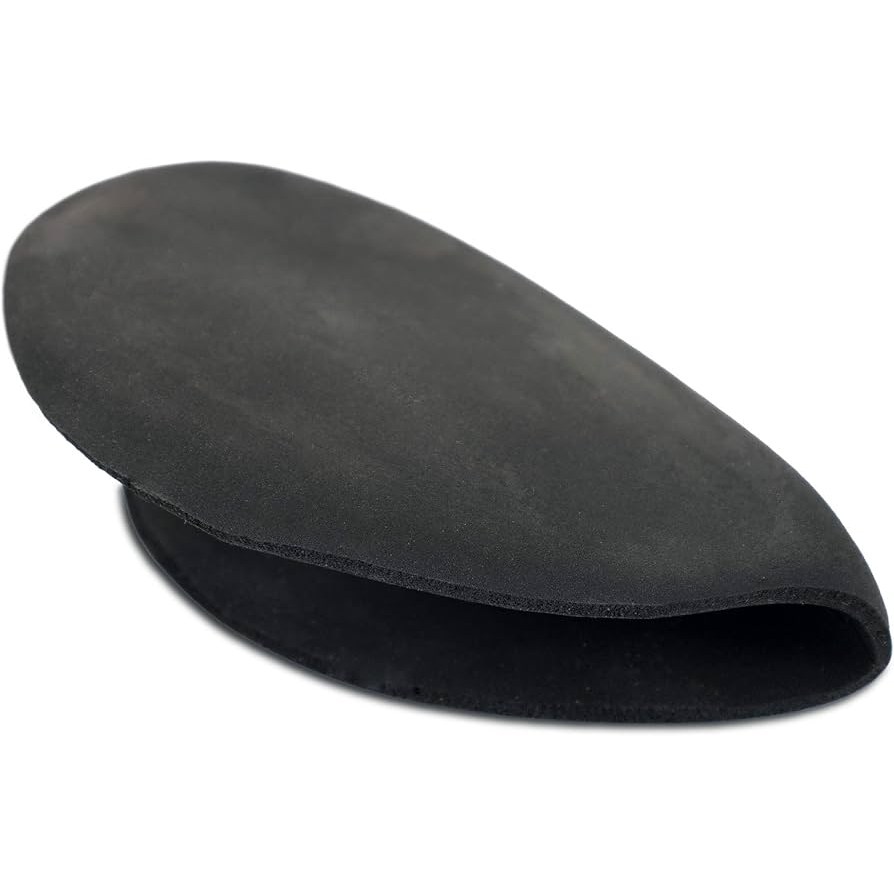
Gel Pads
The next type of chinrest pad is made of gel. There tend to be two types of gel pads: some that need to be heated up to conform to your jaw, and others that move as you move and conform in real time.
Gel pads usually have adhesive or Velcro attachments on the back and sit directly on top of your existing chinrest.
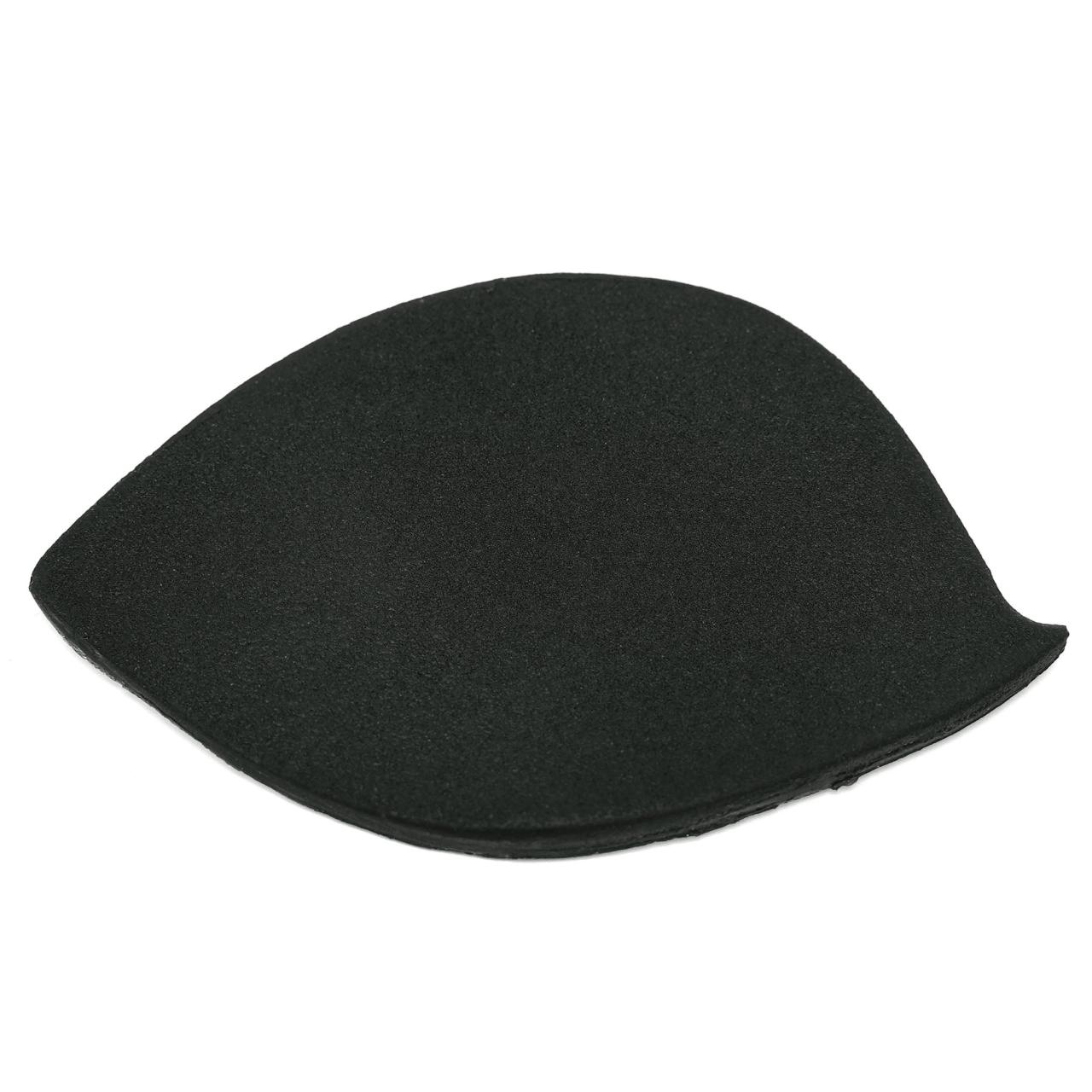
Fabric Pads
Fabric chinrest pads generally have less padding than the first two types of pads, but they usually cover more of the violin: the chinrest, button, and a bit of the back. These tend to have loops or ties to connect them to your instrument.
Some fabric chinrest pads have foam or gel padding inside, but others are made up of just a layer of cloth to prevent the chinrest, metal hardware, and the wood of the instrument from touching your skin.
Fabric pads are usually best for those who experience irritation from either the nickel hardware on the chin rest or just the friction of the violin against the neck and collarbone.
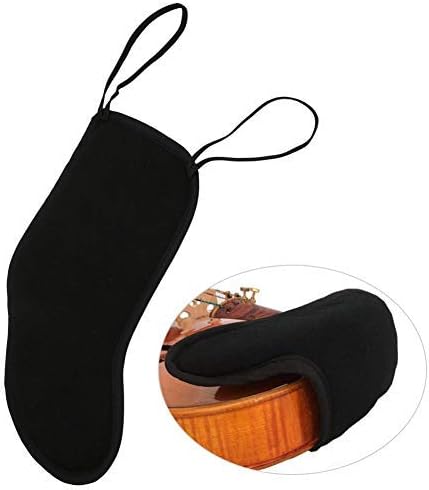
Leather and Suede Pads
The final main type of chinrest pad is made of leather or suede. Many players like these pads because of the texture of the material.
These pads feel somewhat like a hybrid between fabric and gel pads; the leather or suede isn’t very thick, but it will mold to your chin or jaw over time, similarly to gel.
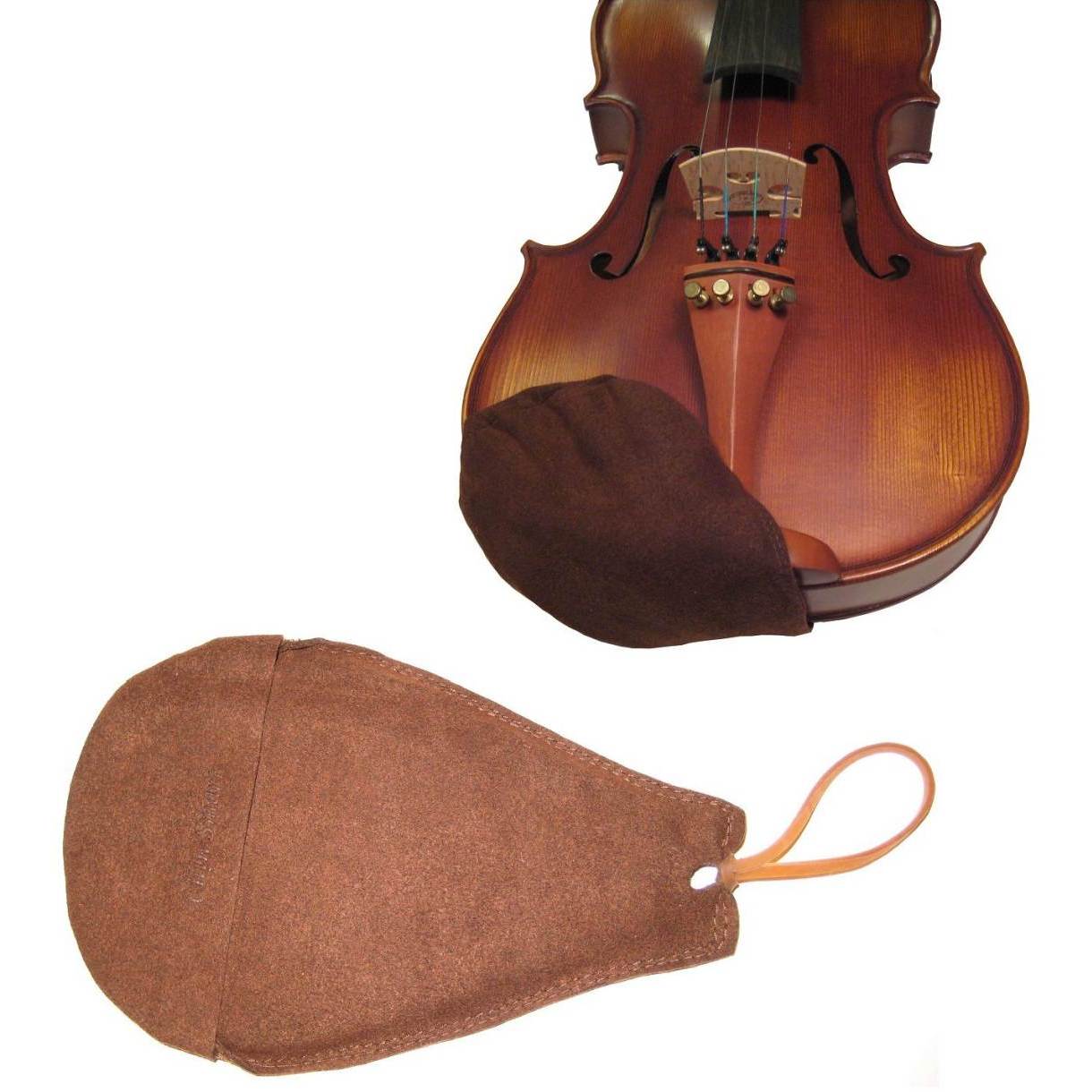
Attaching A Chinrest Pad to Your Violin or Viola
Every chinrest pad is a little different, so there are a few ways you can attach them to your violin.
Adhesive
Some chinrest pads come with adhesive on the back. These sit right on top of your chinrest and are meant to stay there for a long time.
Many violinists are wary of these types of pads, as they can leave residue on the chin rest. If you’re concerned about this, make sure to read through the reviews of whatever chinrest pad you’re looking at and check for any problems others have had with the adhesive.
Velcro
Some chinrest pads have velcro attached to the part of the pad that goes underneath the chinrest. This means you can hide a piece of velcro on the underside of your chinrest and the pad will connect there.
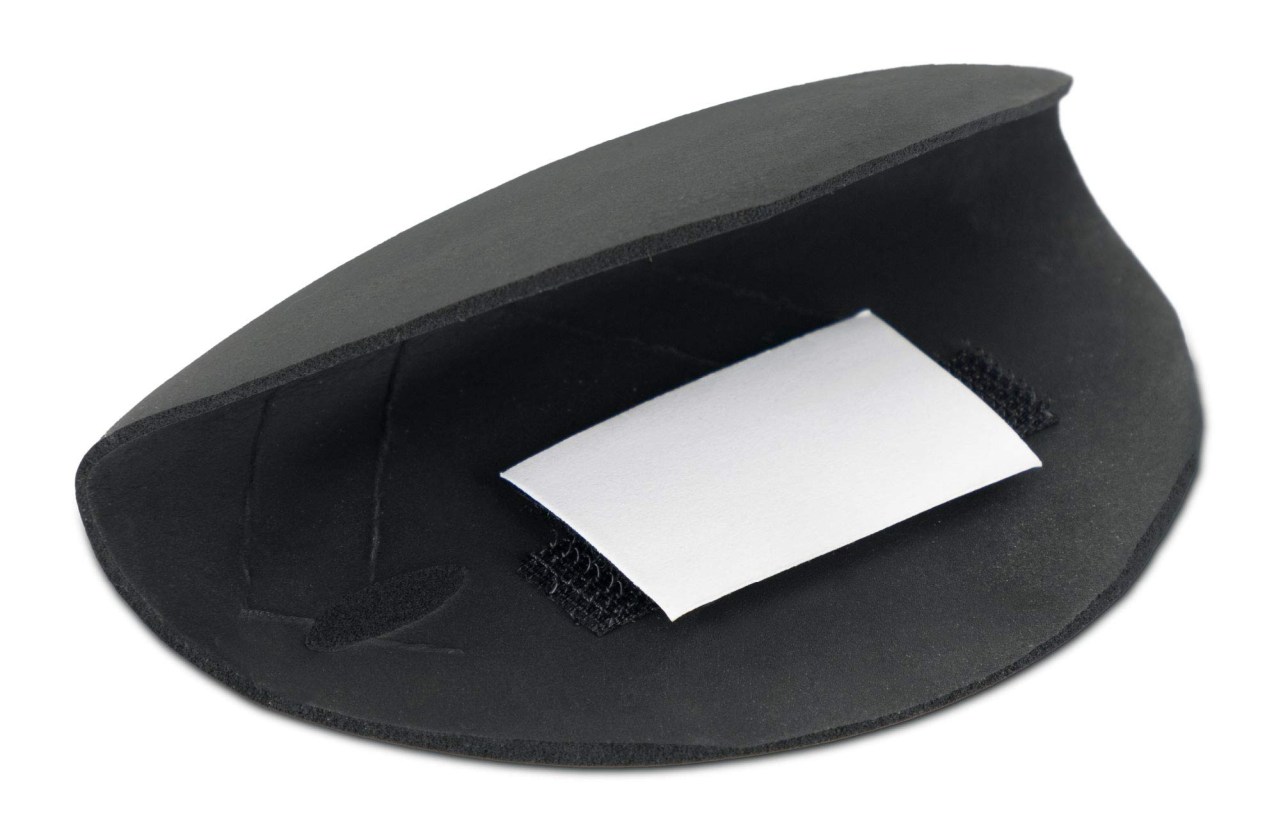
A pocket-style chinrest pad fits over your existing chinrest and generally doesn’t require any type of adhesive or velcro. It can easily be removed if you need to clean it.
Ties
Finally, some chinrest pads have ties or even rubber band loops that attach to the end button or C bouts. These won’t leave any lasting adhesive, but they may dampen the sound of your violin very slightly and are more likely to fall off. The recommended product below is available at Fiddlershop. You can find it here.
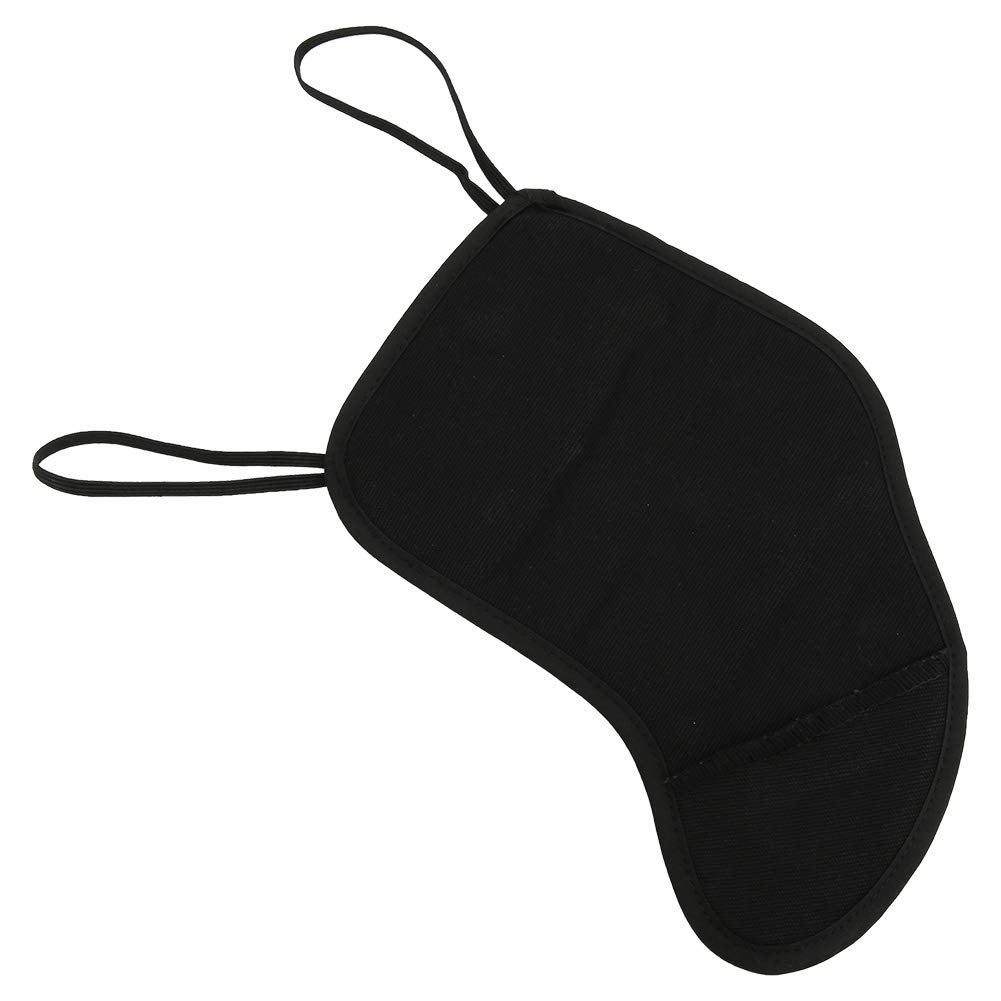
My Top 3 Recommended Chinrest Pads
These are a few of the best chinrest pads on the market that I recommend to any violinist or violist.
Strad Pad
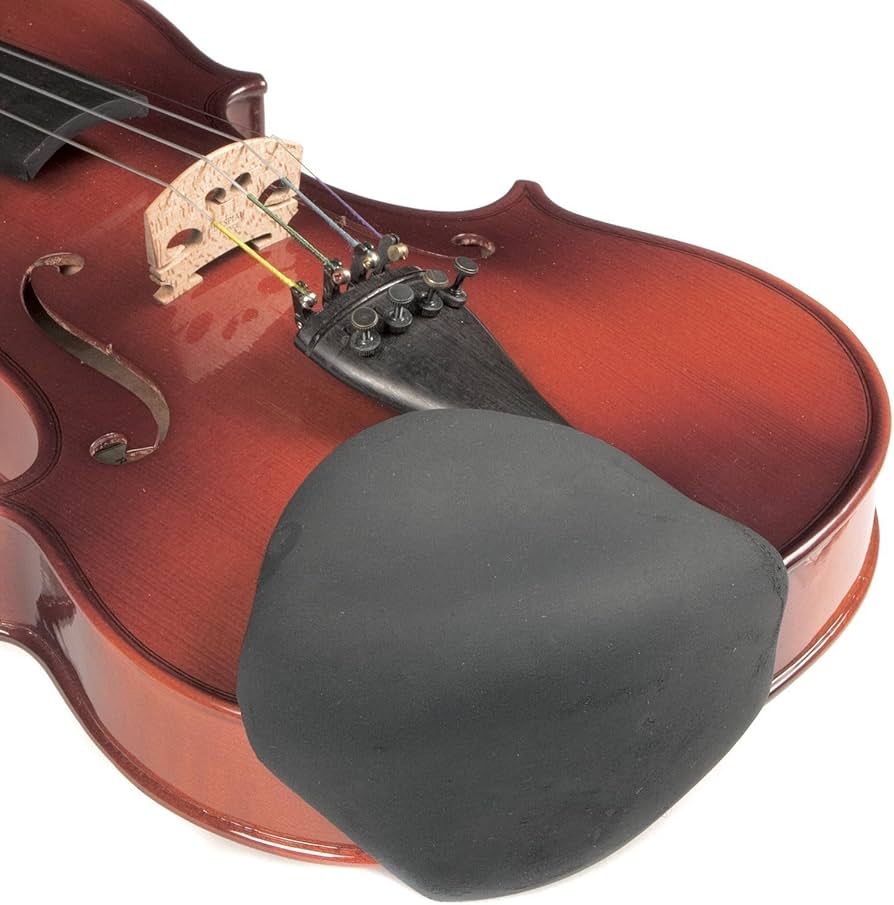
The Strad Pad is a very comfortable foam chinrest pad. It covers both the chinrest and the metal hardware, making its benefits two-fold: it’s comfortable and it can clear up skin irritation!
This chinrest pad is made of foam and covered in latex. Please do not buy this pad if you have a latex allergy!
The Strad Pad has a flap that wraps under the chinrest and comes with Velcro to attach the pad underneath the chinrest. Some players opt not to use the Velcro attachment and find that the pad stays in place fairly well without it.
Some violinists do find that the Strad Pad picks up a lot of makeup. If you wear makeup regularly while playing, you’ll want to clean the Strad Pad often to keep it clean and to prevent fading.

Sattler Strad Pad Chinrest Cover
Support us for more FREE content No extra costs for you Recommended by Violinists
GelRest
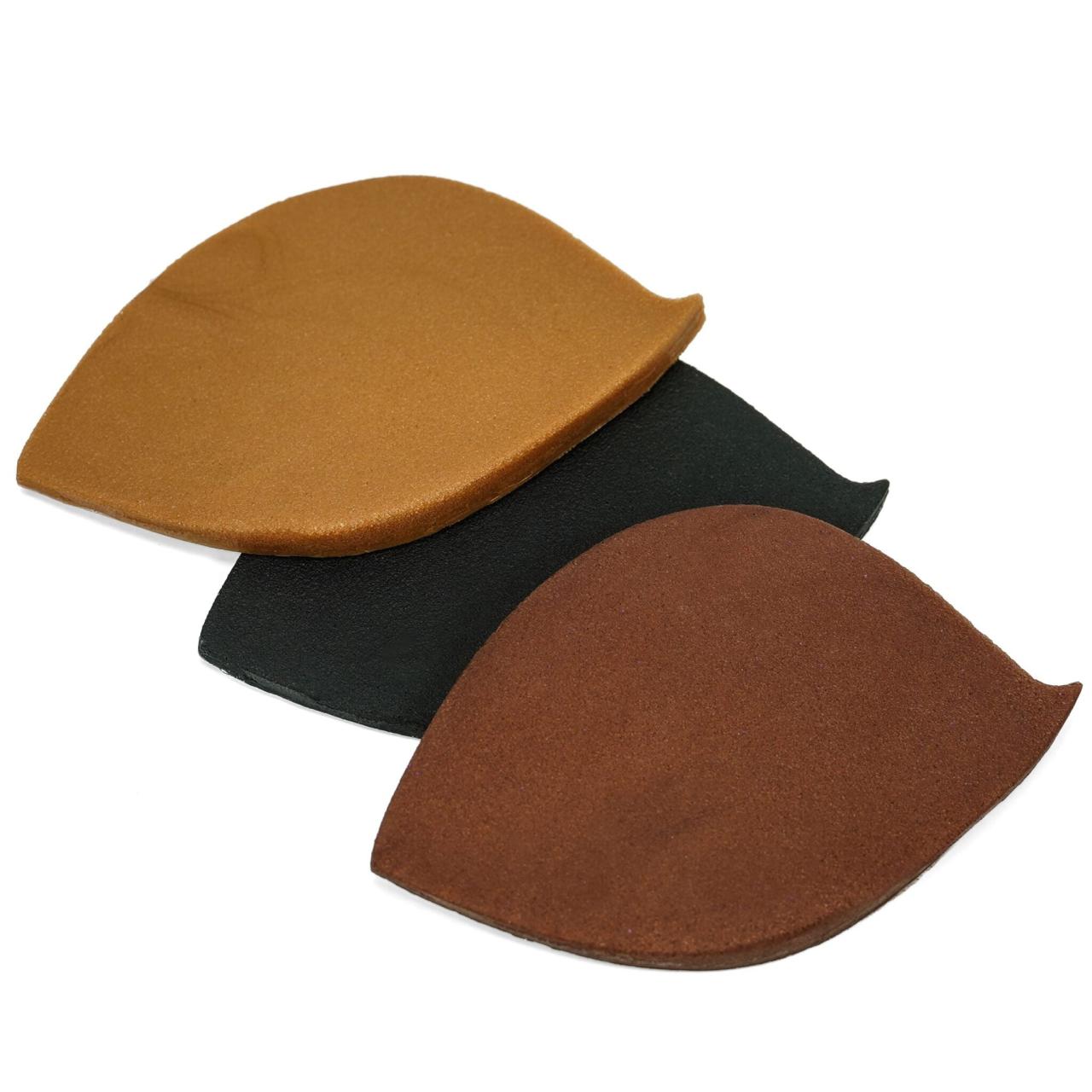
The GelRest is the most popular gel chinrest pad available. These come in two sizes: 4/4 and 1/2, and are available in colors to match your chinrest, along with fun colorful shades.
This pad uses an adhesive back to stick right on top of your chinrest. They should come off easily without leaving residue on the chinrest, but they’re meant to sit on the chinrest long-term.
Many violinists love this chinrest pad because it conforms to the shape of your chin or jaw. It’s really comfortable and can help eliminate a lot of tension.
Before buying, do some research on what size will work best for your chinrest. These are a bit difficult to cut, and they don’t stick quite as well when the sizing is off.

Gelrest Chinrest Solution
Support us for more FREE content No extra costs for you Recommended by Violinists
Chin-Chum
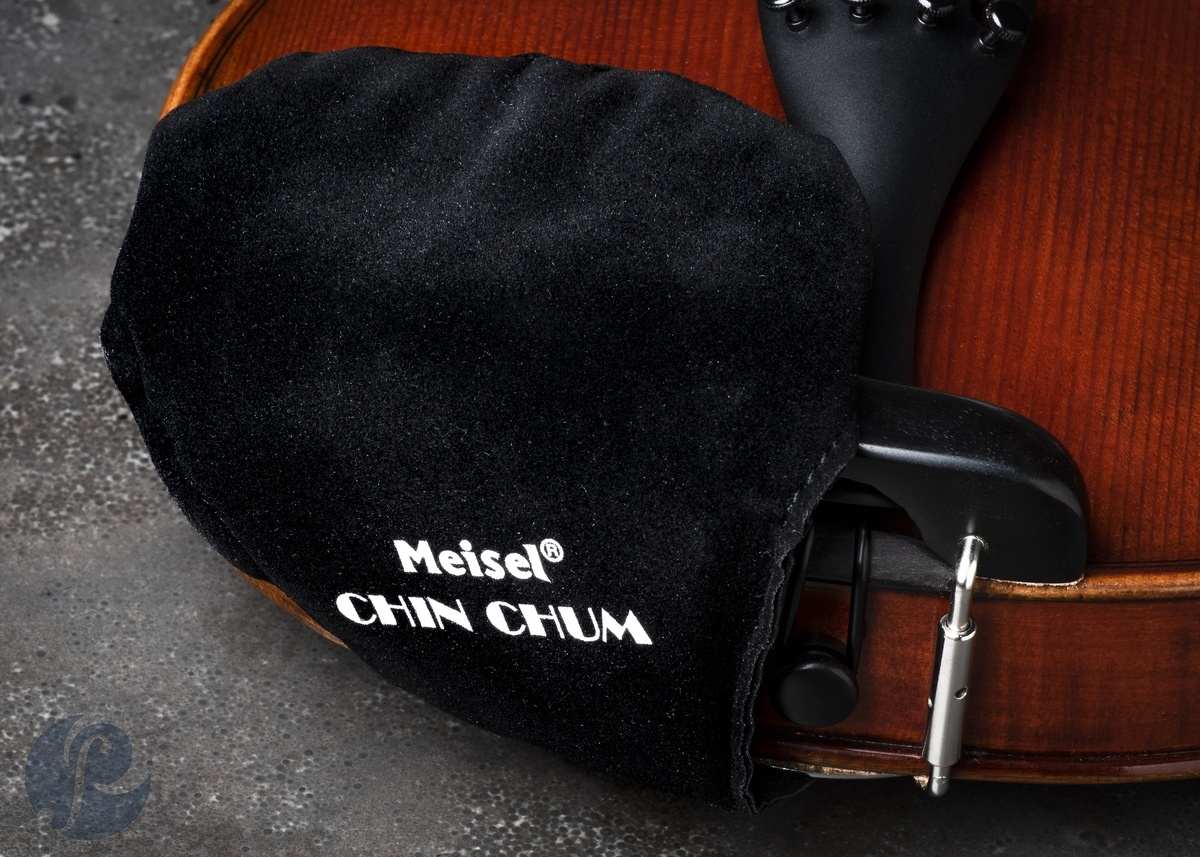
The Chin-Chum is a suede-padded violin chinrest pad. It has a pocket that fits over the chinrest and covers most of the metal hardware. It connects to the right C bout with a rubber band.
This chinrest pad is great for those who want more comfort, want some protection from the metal hardware, and even those who sweat a lot while they play.
A similar chinrest pad is also available on Amazon. It works the same way and is made of a chamois-like material.
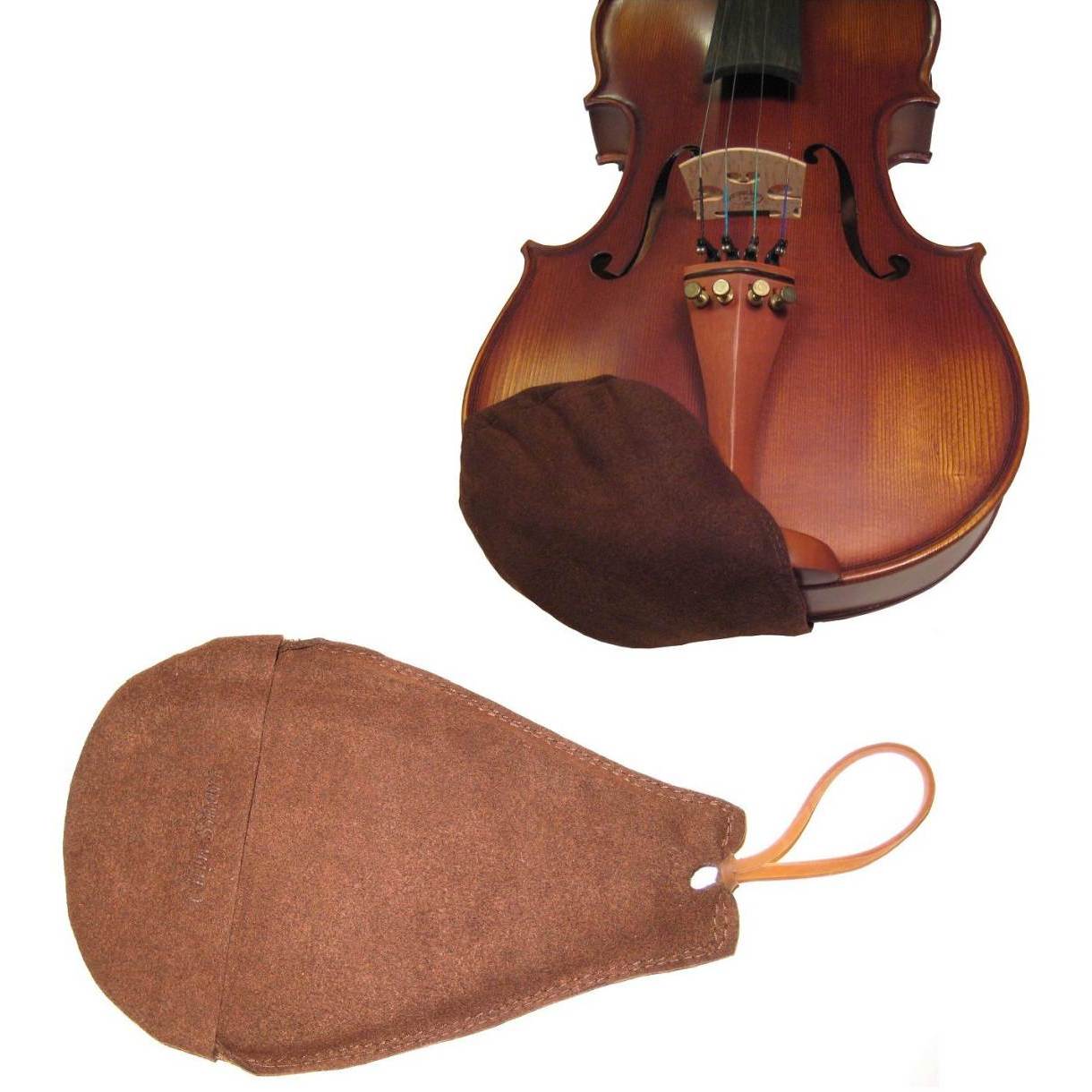
Chin Smart Chinrest Cover for Violin and Viola-Brown
Support us for more FREE content No extra costs for you Recommended by Violinists
Learn More
I hope this overview of chinrest pads gives you an idea of the ergonomic accessories available for your violin or viola. If you’ve been struggling with tension, skin irritation, or pain, please know that violin playing does not have to feel that way. If you’ve been experiencing discomfort, experiment with a chinrest pad and see if it helps!
Want to learn more about ergonomic violin playing? Read my Shoulder Rest Guide or go back to basics with Proper Violin Posture in 5 Steps.
Free Violin Sheet Music in Your Inbox
Subscribe to my mailing list to receive free sheet music, playing tips, a weekly portion of motivation, and never miss a new video or course I release!
